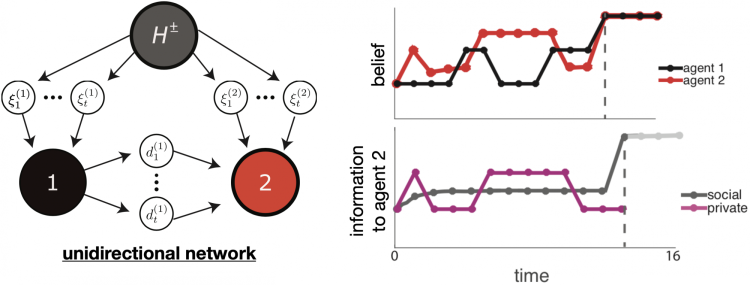Decision Making: Dr. Zachary Kilpatrick
In a recent article published in CU Boulder Today, our very own Dr. Zachary Kilpatrick’s work on decision making was highlighted in the context of electoral decision making. In the article, Dr. Kilpatrick’s ongoing research project on how people make decisions, such as voting, is discussed to understand the way that people make decisions on which candidate to vote for, and why a person may choose one candidate over another.
The critical part of this project is the real world application of the topic. Dr. Kilpatrick discusses how people use their friends’ opinions in their own decisions, and how those decisions may be biased. “You see friends that you trust are voting for this particular candidate in the primary, that may sway your belief in that direction … these biases really affect how opinions spread on networks. Such opinion propagation networks can be hijacked to rapidly spread disinformation.” Understanding how disinformation spreads is critical to addressing a number of current problems in the media and social networks. Dr. Kilpatrick emphasized the importance of having a “good quantitative understanding of how bias can shape group opinion spread in networks,” which is what Dr. Kilpatrick is working on doing.

Left: graph of the flow of information in a two agent unidirectional network. Right: Each agent receives a sequence of pieces of evidence. Agent 1 then communicates their decision state (decided for H+, decided for H-, or undecided) to agent 2. Agent 2 then uses this information to update their belief.
When asked why he chose this type of research and what excited him about it, Dr. Kilpatrick explained that he wanted to extend his projects related to dynamic environments to include other dynamic environments where “you’re making observations of some ground truth and also the opinions of your neighbors … we wanted to start incorporating these sort of more realistic, real-world examples of how people, or other animals, make decisions.” From here, however, the “current direction in the work is making models of cliques, basically of large groups of individuals that are all fully connected to each other ... what happens when one of them makes a choice, typically, is that because everybody’s connected to everybody else and they all see this one person make a decision, then that can abruptly sway the beliefs of a substantial fraction of the group enough for them to trigger an opinion in all of them ... You get these waves of decisions that are triggered by just a single decision of one of the agents in the group.”
We asked Dr. Kilpatrick about what a person should take away from his work. He responded by saying that “when you’re considering how much to value your friends’ or experts’ or news sources’ opinions, look at their history of decisions that they’ve made and usually that’s a good guide to what their preexisting biases may already be … Briefly, just consider peoples’ biases when you weigh their opinions in making your own decisions.”


